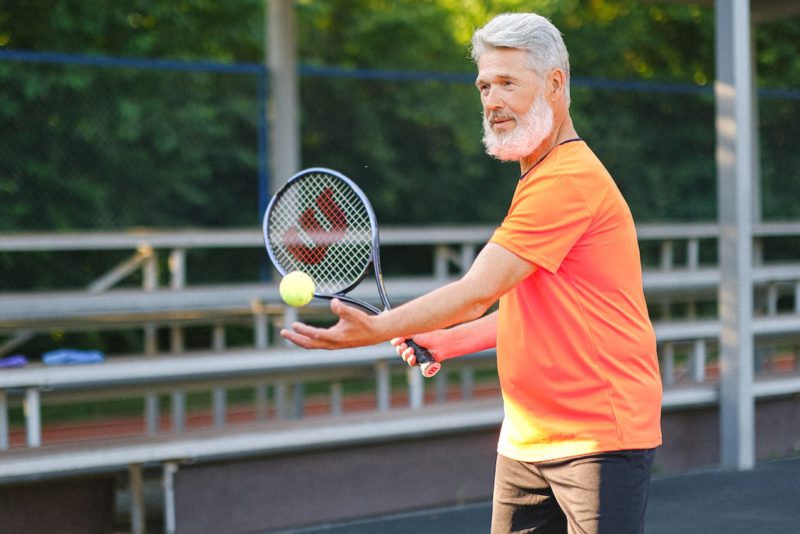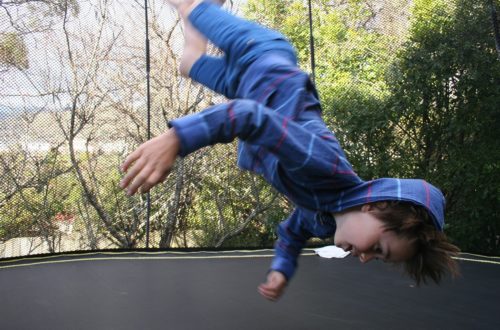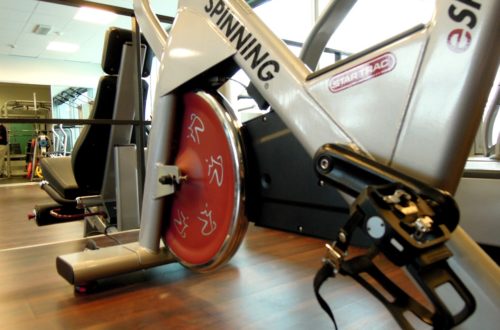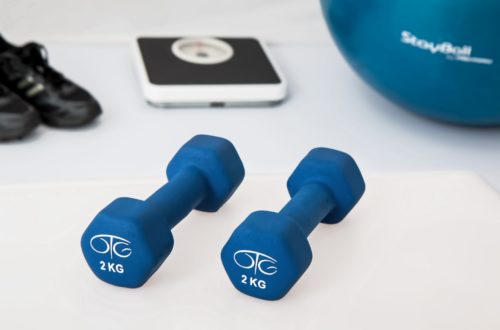7 Reasons To Embrace Sport After 50

Many people think that you don’t need sport after 50. Age already takes its own and in fact, nothing can be changed. Yet, experts advocate strongly for regular exercise even in mature years.
Why is engaging in sport after 50 crucial? What steps should you take if the gym has never been a familiar terrain? And how can you maximize the benefits of training?
The transition into the 50s marks a pivotal moment for the body. A mere two centuries ago, reaching 50 was quite an accomplishment, signifying aged fragility. Today, advancements in nutrition and medicine have reshaped this narrative, extending life expectancy and altering lifestyles.
However, crossing the threshold of 50 brings unwelcome changes to the body’s dynamics. Digestion slows, muscles transition to fat, and the once-taut body softens. Simultaneously, internal mechanisms undergo shifts, with joint discomfort and cardiovascular concerns prevailing.
Opting for a sedentary existence post-50 accelerates the aging process, inviting a surge in chronic illnesses, hindered detoxification, and irreversible bodily changes. But there’s an alternative path that promises vitality and improved health – embracing sport after 50.
1. Enhanced Cardiovascular Health
Engaging in sports after the age of 50 presents a multitude of advantages, with enhanced cardiovascular health topping the list. Amidst the changes that accompany aging, prioritizing physical activity significantly contributes to a healthier heart and overall well-being.
Regular participation in sports post-50 significantly diminishes the risks associated with cardiovascular diseases. The heart, a vital muscle, benefits immensely from the stimulation of physical exertion. Improved circulation, strengthened heart muscles, and regulated blood pressure are direct outcomes of this engagement.
Furthermore, sports serve as potent tools in managing cholesterol levels, pivotal in averting heart-related complications. The amalgamation of these benefits cultivates a resilient cardiovascular system, fortifying the body against potential heart ailments.
2. Strengthening Bones and Muscles
Aging often ushers in unwelcome changes in bone density and muscle mass. However, the decision to engage in sport after the age of 50 serves as a formidable defense against these natural declines.
Participation in sports involving weight-bearing activities or resistance training becomes a powerful ally in preserving bone density and fortifying muscles. These activities offer a dual benefit, countering the common challenges of osteoporosis and muscle atrophy that often accompany aging.
Through regular engagement in sport, individuals past the age of 50 witness a noticeable difference in their skeletal and muscular strength. The weight-bearing nature of certain sports, coupled with targeted resistance exercises, acts as a catalyst in maintaining bone density and muscle mass.
3. Improving Balance and Flexibility
The pursuit of sports after crossing the 50-year milestone brings forth a crucial advantage: the enhancement of balance and flexibility. These elements play pivotal roles in maintaining mobility and preventing falls as one ages.
Many sports inherently involve movements that amplify balance and flexibility. Activities like swimming, or tennis, among others, demand varying degrees of body control, thus enhancing these essential attributes.
Regular engagement in such sports leads to noticeable improvements in balance and flexibility, critical aspects that tend to diminish with age. These enhancements reduce the risk of falls, safeguarding against potential injuries, and ensuring continued freedom of movement.
4. Weight Management and Metabolic Health
Entering the realm of sports after reaching the age of 50 introduces a potent tool for managing weight and supporting metabolic health—a crucial consideration in maintaining overall well-being.
Regular physical activity through sports aids significantly in weight management, combating the tendency of metabolism to slow down with age. Engaging in sports helps burn calories, promoting weight control and preventing obesity-related complications.
Moreover, sports participation revs up the metabolic rate, optimizing the body’s ability to utilize energy efficiently. This, coupled with calorie expenditure during physical activity, contributes to improved metabolic health, supporting various bodily functions.
5. Enhancing Mental Well-Being
The decision to engage in sports after crossing the half-century mark carries profound implications for mental well-being, offering a refreshing boost to one’s emotional and psychological health.
Participation in sports triggers the release of endorphins, the body’s natural mood elevators, fostering a sense of euphoria and alleviating stress, anxiety, and symptoms of depression. These positive effects are particularly valuable as individuals navigate the complexities of life after 50.
Regular engagement in sports serves as a therapeutic outlet, allowing individuals to unwind, destress, and rejuvenate their mental faculties. The sense of accomplishment and satisfaction derived from physical activity further contributes to a more positive outlook on life.
6. Social Engagement and Connection
Embarking on sports after reaching the age of 50 heralds an avenue for social interaction and connection, offering a vibrant opportunity to forge meaningful relationships and foster a sense of camaraderie.
Many sports activities involve teamwork, group training, or club participation, creating fertile ground for social engagement. Joining sports clubs or groups not only facilitates physical activity but also nurtures friendships and a sense of community.
The social aspect of sports plays a pivotal role in combating feelings of isolation or loneliness, common challenges faced by individuals as they age. Sharing experiences, cheering for each other’s progress, and simply enjoying the company of like-minded individuals contribute significantly to mental and emotional well-being.
7. Longevity and Improved Quality of Life
The decision to embrace sports after crossing the 50-year milestone offers a compelling promise: an extended lifespan accompanied by an elevated quality of life.
Studies consistently highlight the correlation between regular physical activity, such as engaging in sports, and increased life expectancy. However, beyond longevity, the focus lies on the quality of those added years.
Regular participation in sports contributes significantly to an active, vibrant lifestyle, allowing individuals to maintain independence, vitality, and the ability to partake in various activities they cherish. This translates to an overall enhanced quality of life.
By prioritizing sport after 50, individuals not only extend their years but also ensure that each moment is filled with vitality and the capacity to savor life to the fullest, marking a harmonious balance between longevity and a fulfilling existence.
How to Start Sports After 50
Embarking on a training routine after 50 demands a cautious yet consistent approach, prioritizing gradual progress and mindful practice over sudden exertion. Here are crucial steps to initiate your training:
Moderation is Key
Avoid excessive strain and prioritize gentle yet consistent effort. Begin with short sessions, perhaps just 5 minutes, and incrementally extend the duration as your body adapts. The focus should be on steady progress, not immediate intensity.
Prioritize Warm-Ups
Before delving into exercises, ensure a thorough warm-up routine. This step is vital to prepare your muscles and prevent injuries. Gentle stretches and light movements can adequately prime your body for the workout ahead.
Consistency Counts
Aim for regularity in your training regimen. Committing to sessions 2-3 times a week is a reasonable starting point. Consistency is the cornerstone of progress and yields gradual but substantial improvements in fitness and overall health.
Holistic Approach
Remember, training isn’t solely about physical exertion. Proper nutrition is equally imperative. A balanced diet complements your workouts, fortifying your body internally and externally.
Choosing the Right Sport for Exercise After 50
When it comes to exercising after 50, selecting the right sport is pivotal. Here are several options tailored to various fitness levels:
Walking: An ideal starting point for those new to sports. Walking is a low-impact exercise, naturally suited for the body without risking injury. It’s an accessible and gentle way to kickstart your fitness journey.
Running: A fantastic workout, but caution is paramount at 50 and beyond. Begin running gradually, allowing your body time to adjust to the demands. Pay attention to proper form and consider seeking guidance to prevent strains or injuries.
Swimming: Highly recommended for individuals maturing in age. Swimming exercises the entire body, fortifying muscles, improving lung capacity, and nurturing the cardiovascular system. It’s particularly gentle on the joints, making it an excellent choice for those seeking a full-body workout without high impact.
Gym Workouts: Strength training at the gym can be immensely beneficial, but it’s essential to start under the guidance of a qualified coach. Individualized training regimens catered to your capabilities ensure a safe and effective start to your strength training journey.
Cycling: Riding a bicycle is a low-impact exercise that enhances cardiovascular health, leg strength, and overall endurance. It’s gentle on the joints and allows for various intensity levels, making it adaptable for different fitness levels.
Tennis/Badminton: Engaging in tennis or badminton can boost cardiovascular health, agility, and coordination. Both are social sports that offers a mix of aerobic and anaerobic exercise, promoting overall fitness while enjoying competitive or casual gameplay.
Golf: While seemingly leisurely, golf involves walking and swinging motions that engage various muscle groups. It provides opportunities for low-impact physical activity, promotes balance, and can be enjoyed at various skill levels.
Dancing: Whether it’s ballroom dancing, Zumba, or other dance forms, dancing is a fun way to stay active, enhance cardiovascular health, and improve coordination and balance.
Hiking: Exploring nature through hiking offers both physical and mental benefits. It’s a fantastic way to improve cardiovascular health, build lower body strength, and enjoy the outdoors while setting your own pace.
Rowing: Rowing provides a full-body workout that strengthens the arms, back, and core muscles. Whether on water or using a rowing machine, it’s a low-impact exercise that promotes cardiovascular fitness and muscle endurance.
Bowling: While seemingly casual, bowling can offer light physical activity and social engagement. It promotes hand-eye coordination, balance, and flexibility, making it a leisurely yet enjoyable way to stay active.
Archery: This precision-based sport focuses on concentration, posture, and muscle control. It can be a calming and engaging activity that also enhances upper body strength and coordination.
Sailing: For those with access to water, sailing provides a unique mix of physical activity and mental stimulation. It involves coordination, strength (particularly in handling sails), and can offer a serene, enjoyable experience.
Each of these sports offers distinct benefits, allowing you to tailor your exercise routine to your preferences and physical capabilities. Consider your comfort, fitness level, and any existing health conditions before diving into any new sport or exercise regimen.
Conclusion
In short, embracing sport after 50 offers a multitude of advantages for overall health and well-being. From enhancing cardiovascular health and strengthening muscles to improving balance, flexibility, and mental resilience, engaging in various sports presents an array of opportunities to lead a fulfilling and active life.
Whether opting for walking, running, swimming, or exploring other sports like cycling, tennis, or dancing, the key lies in finding enjoyable activities that suit individual fitness levels and preferences. Making sport a part of life after 50 isn’t just about staying fit; it’s about embracing vitality, longevity, and quality of life, one enjoyable activity at a time.
Would you like to receive similar articles by email?





